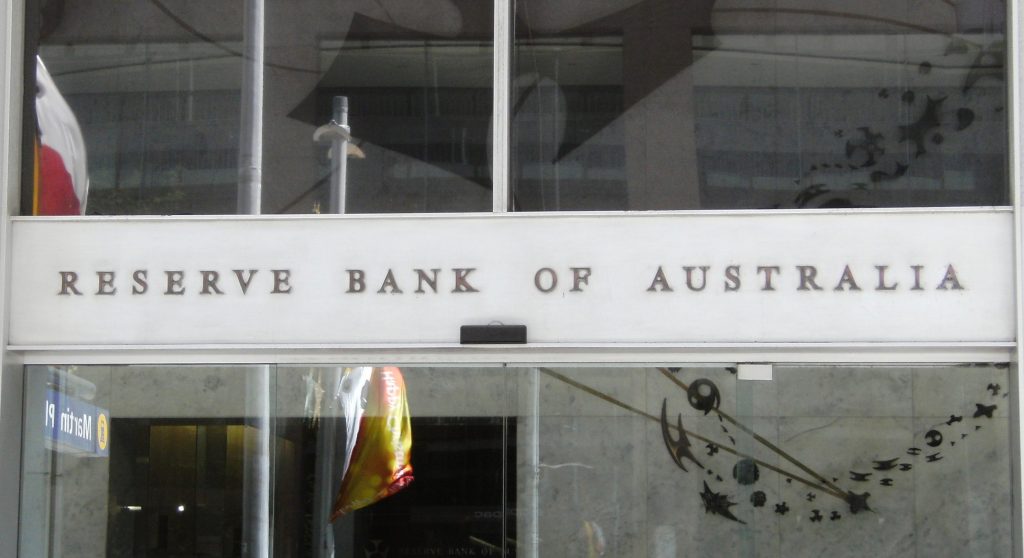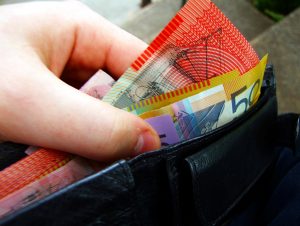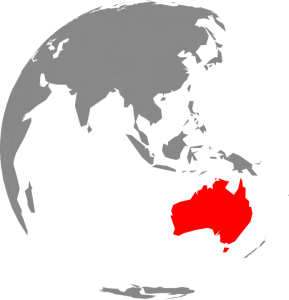Interest Rates Are On Hold, But For How Long?

The RBA Board met this week and decided to leave the target cash rate on hold at a record low 1.50 percent. In the monetary policy statement, Philip Lowe came across reluctant to lower rates, so many economists are pushing back their expectations of another cut until mid- 2017.
Speculating on interest rate movements is a favourite pastime for homeowners, particularly now that borrowing costs are so low and property prices have increased significantly. Most investors believe that home prices go up and down in cycles, and so if interest rates are low they presume an increase must be imminent. The reality, however, is that the longer rates remain low, the more difficult it is for the RBA to increase borrowing costs.
What Money Is, And Why It Has Value
 I believe low interest rates are here to stay, at least for the foreseeable future. To properly understand why, we must first consider what money is and why it has value.
I believe low interest rates are here to stay, at least for the foreseeable future. To properly understand why, we must first consider what money is and why it has value.
Money is a commodity that allows us to designate values on products and services. In essence, it measures the demand and supply of the things that we exchange with one another. The greater the demand in relation to supply, the more expensive the item or service is.
Prices change because of the supply and demand of products and services, but also because of the supply and demand of money itself. If money is readily available to borrow, then interest rates should be lower. If less money is available to lend out, then borrowing costs should be higher. Interest is the cost of having access to money that has not yet been earned.
Money is created in society through the creation of debt. This might seem confusing but let me give you a simple example. If you deposit $10 in a bank account, then that $10 is still yours and you can draw on it at any time. However, the bank you place it with does not simply hold it in a vault; they lend it out.
If the bank was to lend $9 to another person, then the bank has created $9 as an asset on its balance sheet, but you still have your $10 as well. There is now $19 in the economy where there had previously been $10.
After the borrower of the $9 pays $1 interest, there is now $20 on the bank’s balance sheet: your $10 on deposit, the $1 profit the bank has made from interest, and the $9 the borrower owes the bank. Through our fractional reserve banking system, we get gradual and incremental increases in the supply of money in our economy.
If the money that was leant out was used for consumption, for example, to buy an established dwelling or to go on a holiday, then there is no increase in the supply of goods and services. More money was created in the economy through debt, increasing the supply of money, therefore making it less valuable. Most economists call this monetary inflation.
In contrast, if the money was used to produce more goods and services, and this supply of new stuff outpaces the increase in the amount of money, then this should result in deflation. Money would become more valuable, because there is less of it available to buy an increasing amount of goods and services.
We Don’t Have An Open And Free Market
 In an open market, without government intervention, there would be natural fluctuations in the amounts of money available within the economy, and therefore the cost of borrowing money. Interest rates would be set by supply and demand, not by the RBA.
In an open market, without government intervention, there would be natural fluctuations in the amounts of money available within the economy, and therefore the cost of borrowing money. Interest rates would be set by supply and demand, not by the RBA.
Efficient borrowing would lead to an increase in the amount of goods and services at a pace greater than the creation of new money. Prices would go down and interest rates would get lower because the buying power of money would be increasing and investors would be inclined to accept lower returns on investment.
Alternatively, periods of debt-based consumption spending would lead to growth in the money supply outpacing production. Prices would go up, and investors would require higher interest rates to cover both their loss in purchasing power of their money plus a profit margin.
Since interest rates are set by the RBA, and not by the free market, the above example is not exactly how our society works.
Governments throughout the world mandate inflation targets. The RBA aims for a range of 2 to 3 percent. The only way to achieve this is for the money supply to grow faster than the supply of good and services.
Our regulators tinker with the economy in the name of financial stability. Prevailing economic theory suggests there are fewer defaults in an environment where the supply of money is increasing. Voters tend to get a lot more upset about the immediate fallout of defaults and bankruptcies than the gradual erosion of their buying power, so politicians are incentivised to keep the money supply increasing and interest rates low.
Currently, throughout the western world, central banks are buying financial assets, in an effort to maintain low interest rates and stimulate unproductive economies. A large part of this new money creation is simply aimed at providing money to meet growing government expenditures, in return for an IOU or government bond.
In effect, central banks are creating money out of thin air. The only check on the undisciplined use of this power is a loss in buying power of that currency, through a reduction in the exchange rate. If things really get out of control, the result is hyperinflation. This is currently being experienced in both Zimbabwe and Venezuela, but there are many other historical examples, with pre-WW2 Germany being one of the most well known examples.
Low Interest Rates And The Australian Investor
 In Australia, we have a situation where our Federal Government has a large debt and a budget deficit. This is unsustainable, and our politicians only have two options. Option one is to adjust the federal budget and start spending less, collecting more in taxes, or a combination of both. Overtly doing either is very unpopular, so politicians tend to favour option two: allowing inflation to reduce the real cost of repaying government debts while at the same time increasing income from taxation without having to adjust tax rates.
In Australia, we have a situation where our Federal Government has a large debt and a budget deficit. This is unsustainable, and our politicians only have two options. Option one is to adjust the federal budget and start spending less, collecting more in taxes, or a combination of both. Overtly doing either is very unpopular, so politicians tend to favour option two: allowing inflation to reduce the real cost of repaying government debts while at the same time increasing income from taxation without having to adjust tax rates.
Artificially low interest rates generally result in appreciating asset prices and more private debt, which the Government will also eventually find troubling. We’re already seeing it now, as disgruntled first homebuyers are struggling to buy into the market.
Low interest rates can also set the economy up for more trouble in the future. The higher the amount of debt in the private sector the greater the negative impact on the economy when interest rates eventually do rise.
Consider this in the context of recent moves by the Federal Government that have impacted property investors. Interest only loans and investment loans are generally priced higher by lenders in the current market because they have had higher costs imposed on them by the Government in its attempt to slow real estate price growth and to promote deleveraging in households.
Prolonged low interest rates can have a major negative structural effect on the economy, as we’ve seen in Japan, which has had very low interest rates since 1990. We’re seeing similar economic weakness in the USA and Eurozone since the Global Financial Crisis.
An artificially low cost of debt means that businesses often choose to borrow to buy back their own shares or to invest in inflating assets rather than making efficient capital investments that will grow their business and fundamentally improve the economy. The longer rates remain low, the more ingrained these changes become and the greater the effect will be when interest rates eventually rise.
For all of these reasons, the longer rates remain low, the greater the incentive for governments and central banks to keep them low. It may end up taking an external stimulus, as was the case with the Global Financial Crisis to cause a significant change in the direction of interest rates. Unless we get another shock from overseas that drives rates up, don’t expect the current RBA Board to voluntarily raise rates anytime soon.
One thing is certain for investors: while ultra low interest rates are available, now is the time to be taking advantage of them. PropertyInvestingFinance.com is currently able to offer a variable rate loan from as low as 3.59% for owner occupied properties and 3.99% for investment properties. Fixed rates are also available for investors who find this option more attractive.
If you’re keen to reduce your borrowing costs, fill out an expression of interest form; or send me an email and we can catch up for a chat.
Comments
Got something to say? Post a comment...
You must be logged in to post a comment.





Thanks for the article Alistair.
I often wonder when people say interest rates are “artificially low” what that means. When I did some finance subjects at uni I was taught that nominal interest rates are determined by the sum of the level of inflation and a real interest rate.
If the real rate remains constant then the level of inflation is a major driver of rates. Given that inflation is really low (about 1%) then why are rates artificially low? They are low because inflation is low surely! What are your thoughts.
Hi Steve, In an open market for money what you say would be true. Using Australia as an example, the market for money is like the market for any other commodity, its price is set by supply and demand. The RBA is the largest player in this market and as such its activities have a major effect on the price of money i.e. interest rates. When the RBA makes its rate decisions every month it is signaling to the money market what its intentions are, if you notice they refer to the rate they set as the “target rate” they then go into the market and either buy or sell financial assets to bring the cash rate to their target figure. Because the RBA prepared to purchase bonds etc. at their target rate and because of their theoretically limitless resources the rate they are prepared to buy at becomes the market rate. The money market rate would be considerably higher if the RBA was not a buyer at the target rate.
In an open market inflation would have a major effect on rates because lenders will always want a margin on their money above inflation. However, in our economy the RBA looks at inflation and adjusts its target rate to try and keep inflation within the band it has been mandated. Its a case of the tail wagging the dog.
In terms of where rates would be without the RBA interfering. They would be a lot higher because there is a lot of risk within the economy at the moment because of both domestic and international factors, and lenders making commercial decisions want a large premium over inflation to take into account the prevalent risks of a stagnant and unpredictable domestic and international economy.
Steve, I wrote an article last year that might help to answer your question: https://www.propertyinvesting.com/rba-manipulates-interest-rates.
The summary is rates are low because the RBA is buying short-term bonds, which decreases supply and drives up the price, thus lowering the yield. If they stop buying bonds, supply of bonds would rise and the “free market” would set rates higher.
As Al said, the risk factor would also play a part.
Great post Al. I agree. If you take the RBA out of the equation, overnight bank lending rates would rise and mortgage rates would be closer to the historical average. That would bankrupt many Melbourne / Sydney homeowners who bought in the past two to three years. The RBA will not be voluntarily raising rates anytime soon.
So is RBA now holding the (housing market) bull by the horns literally?
It is to the extent that interest rates effect house prices. Its a significant factor but not the only one. If the RBA lost control of interest rates and they ran up hard, inflation might send prices up even further. Economists didn’t think you could get high inflation, high unemployment and low economic growth together (Stagflation) until it happened in the 1960’s. Nothing is certain in economics.